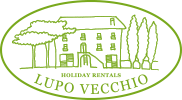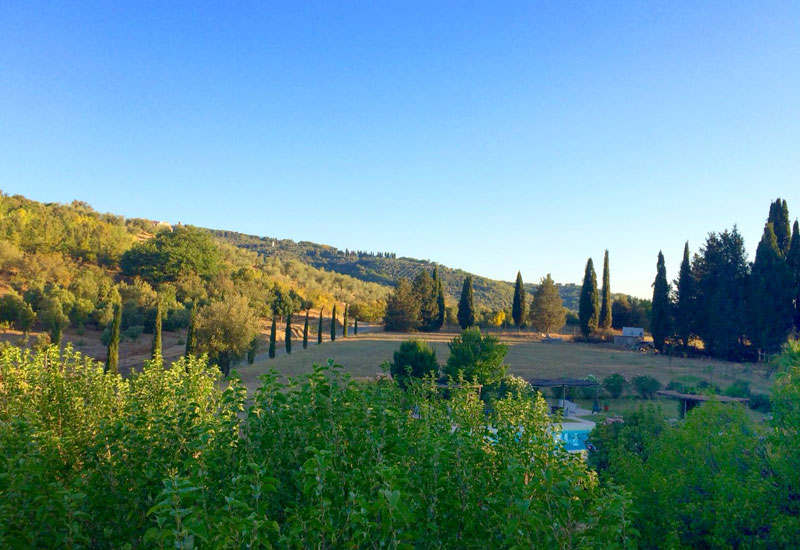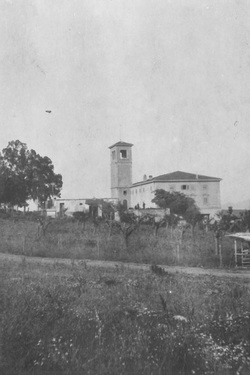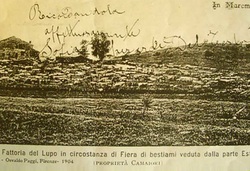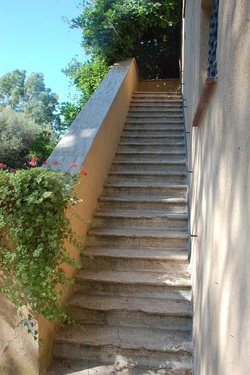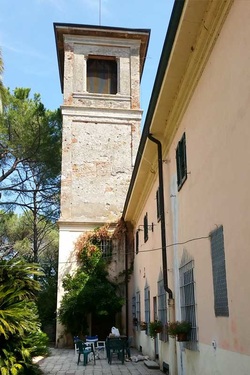History
The Gherardi family bought the Farm Il Lupo in 1919 from the Morgans. The farm used to cover 500 hectares and included several smallholdings and farmhouses along the old Roman road (Aurelia Vecchia) in the Commune of Gavorrano. For many years, Il Lupo was the hub of the rural life in the area.
Currently, the farm is 130 hectares and produces olive oil, wheat, maize, sunflower and tomatoes. The property, now converted to agritourism, comprises the family villa, barn, stables, the farmhouse 'Lupo Vecchio', a unique, circular outdoor threshing floor, a rainwater cistern and an outside oven.
The farmhouse is from the mid 19th century, built in a traditional Tuscan style, characterised by a typical external frontal staircase. In years past it housed an olive press on the ground floor and a rural school on the second floor. Careful restoration in 2004 using traditional, local materials, has preserved the original architecture, while offering modern comforts with an eco-friendly approach.
The farm Il Lupo is still of great interest, not only for the architectural characteristics of the buildings, but also for the presence of old fashioned rural elements that testify to the importance of agriculture in this area. As a whole, Il Lupo still retains elements of a bygone era in the midst of a thriving farming community.
Today, the farmhouse accommodates eight apartments, each named after the original small holdings that comprised the estate of 'Il Lupo'.
Currently, the farm is 130 hectares and produces olive oil, wheat, maize, sunflower and tomatoes. The property, now converted to agritourism, comprises the family villa, barn, stables, the farmhouse 'Lupo Vecchio', a unique, circular outdoor threshing floor, a rainwater cistern and an outside oven.
The farmhouse is from the mid 19th century, built in a traditional Tuscan style, characterised by a typical external frontal staircase. In years past it housed an olive press on the ground floor and a rural school on the second floor. Careful restoration in 2004 using traditional, local materials, has preserved the original architecture, while offering modern comforts with an eco-friendly approach.
The farm Il Lupo is still of great interest, not only for the architectural characteristics of the buildings, but also for the presence of old fashioned rural elements that testify to the importance of agriculture in this area. As a whole, Il Lupo still retains elements of a bygone era in the midst of a thriving farming community.
Today, the farmhouse accommodates eight apartments, each named after the original small holdings that comprised the estate of 'Il Lupo'.
References
- Schede inventariali beni architettonici a cura della Soprintendenza beni ambientali architettonici per le province di Siena e Grosseto redatte dall'arch. M. Cattolico, 1993
- P. De Simonis, R. Stoppani, L'eredità culturale della casa colonica toscana, Firenze 1993.
- Fattorie e paesaggio agrario nel grossetano nel primo '900, a cura di Giuseppe Guerrini, Roccastrada, 1994.
- Grandi Fattorie di Toscana, a cura di di Zeffiro Ciuffoletti e Leonardo Rombai, Firenze 1980.
